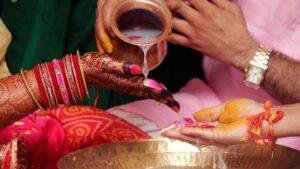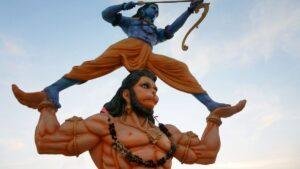Mathura, Vrindavan, and other Braj regions of India celebrate Gopashtami with great enthusiasm. It is a lively and spiritually important holiday. The event celebrates the close connection between people and cows, representing plenty, motherhood, and long-lasting life. Going down on Ashtami Tithi during Kartik Shukla Paksha, Gopashtami has many mythologies and customs behind it, representing the values of kindness and gratitude.
Time, Muhurat, and Date of Gopashtami 2024
This year, Gopashtami will fall on Saturday, November 9, 2024. Ashtami Tithi starts on November 8th at 10:26 PM and ends on November 9th at 09:15 PM. The given date and time are for the specific location which is Dubai. These times are essential for followers because practices and prayers are usually done during these lucky times. Following the exact times is thought to make the celebrations more spiritual, so it’s an integral part of the holiday.
The Mythological Significance of Gopashtami

Hindu folklore, especially stories about Lord Krishna, is where Gopashtami got its start. Indra, the king of the gods, was angry at the people of Braj, but Krishna lifted the Govardhan Hill to protect them. This festival honours that event. Legends say that Krishna told the people of Braj to stop giving Indra their yearly gifts, which made the God very angry. As a response, Indra let loose heavy rains to flood Braj.
Krishna, however, showed off his divine skills by lifting the Govardhan Hill with his tiniest finger. For seven days, the people and their animals were safe there. Eventually, Indra admitted defeat and pulled the floodwaters back. People enjoy this event on Gopashtami to thank Krishna for protecting them and remembering how important it is to be devoted and humble.
Rituals and Customs of Gopashtami
As part of the celebrations for Gopashtami, cows and their babies are worshipped. Usually, the day starts with early morning prayers. After the prayers, followers gather to decorate the cows with bells, garlands, and rangoli (coloured powders). People sing bhajans, religious songs, to Lord Krishna, which fills the air with joy and devotion. By being decorated this way, the cows become images of the grace and beauty of God.
Religious people make unique gifts for the cows, like sugar, bananas, and fresh grass. In some cultures, eating cows shows respect and appreciation for what they do for people. In addition, followers often put tilak, a ceremonial mark, on the foreheads of the cows and do aarti, a traditional form of worship that involves waving lit lamps. When families and friends gather to honour the cows, these traditions bring them closer together.
Gopashtami celebrations are similar to Govatsa Dwadashi, a festival mostly held in Maharashtra. But what makes Gopashtami unique is its focus on cow worship’s caring and protective aspects. Celebrating the day’s events joyfully and showing love and respect for these gentle animals is central to Hindu culture.
The Symbolism of Cows in Hindu Culture

In Hinduism, cows are highly respected and represent cleanliness, food, and not caring about oneself. People treat them with respect and care because they are holy and are often called “Gau Mata” or “Mother Cow.” Cattle are important for more than just their economic value; they represent a way of life that values kindness, thanks, and sustainability.
Cow worship on Gopashtami reminds us how important cows are to farming and everyday life. In rural economies, cows are essential because they provide milk and dung for fuel and help keep the land healthy. Many Hindu homes treat the cow like a part of the family, with rituals meant to take care of her and ensure her health.
Gopashtami celebrates cows to show how important it is to keep the environment in order and how all living things depend on each other. People who attend this event are encouraged to care deeply about nature and protect it. The lessons of Gopashtami stress how important it is to get along with all living things and feel responsible for our world.
Gopashtami in Braj and Beyond
Even though Gopashtami is most widely celebrated in Braj regions like Mathura and Vrindavan, its spirit is felt worldwide. India’s different states have their traditions and ways of celebrating the holiday. For example, in Maharashtra, Gopashtami and Govatsa Dwadashi are marked together, with the main ideas being care and thanksgiving.
People in places where the event is held get to know each other better and share their cultures. During the celebrations, there are often fairs, traditional dances, and plays that show Krishna’s life, mainly how he interacted with cows. These cultural expressions help to keep and share local history, showing off the wide range of beliefs that make up India’s cultural landscape.
The events in Braj are vibrant, with colourful parades and lively get-togethers. People worldwide come to celebrate, making it a time of joy, unity, and dedication. The event brings people and cows closer together and strengthens the area’s cultural identity.
Gopashtami: A Day of Community and Joy
Not only is Gopashtami a holy holiday, but it’s also a celebration of community, happiness, and being together. Festivals bring people of all ages together and help them feel like they share ideals and a sense of unity. Families and friends get together to eat, do routines, and enjoy the holiday spirit.
As people show their love and thanks, the air is filled with laughter, singing, and bells ringing. People in the neighbourhood get together and share traditional meals and sweets, which builds community. The core ideals of Hinduism are reflected in this sense of community, which stresses the importance of relationships and help within the group.
This makes the celebration of Gopashtami a colourful tapestry of cultural expression that strengthens family and friendship ties. It reminds us that spirituality isn’t just something you do on your own; it’s a trip everyone takes together and thrives on connection and kindness.
Conclusion
The festival of Gopashtami is a beautiful reminder of how all living things are linked and how important it is to be kind to all of them. As part of this festival’s rituals and celebrations, people honour cows and promise to be kind, live in harmony with nature, and value it.



















Add comment